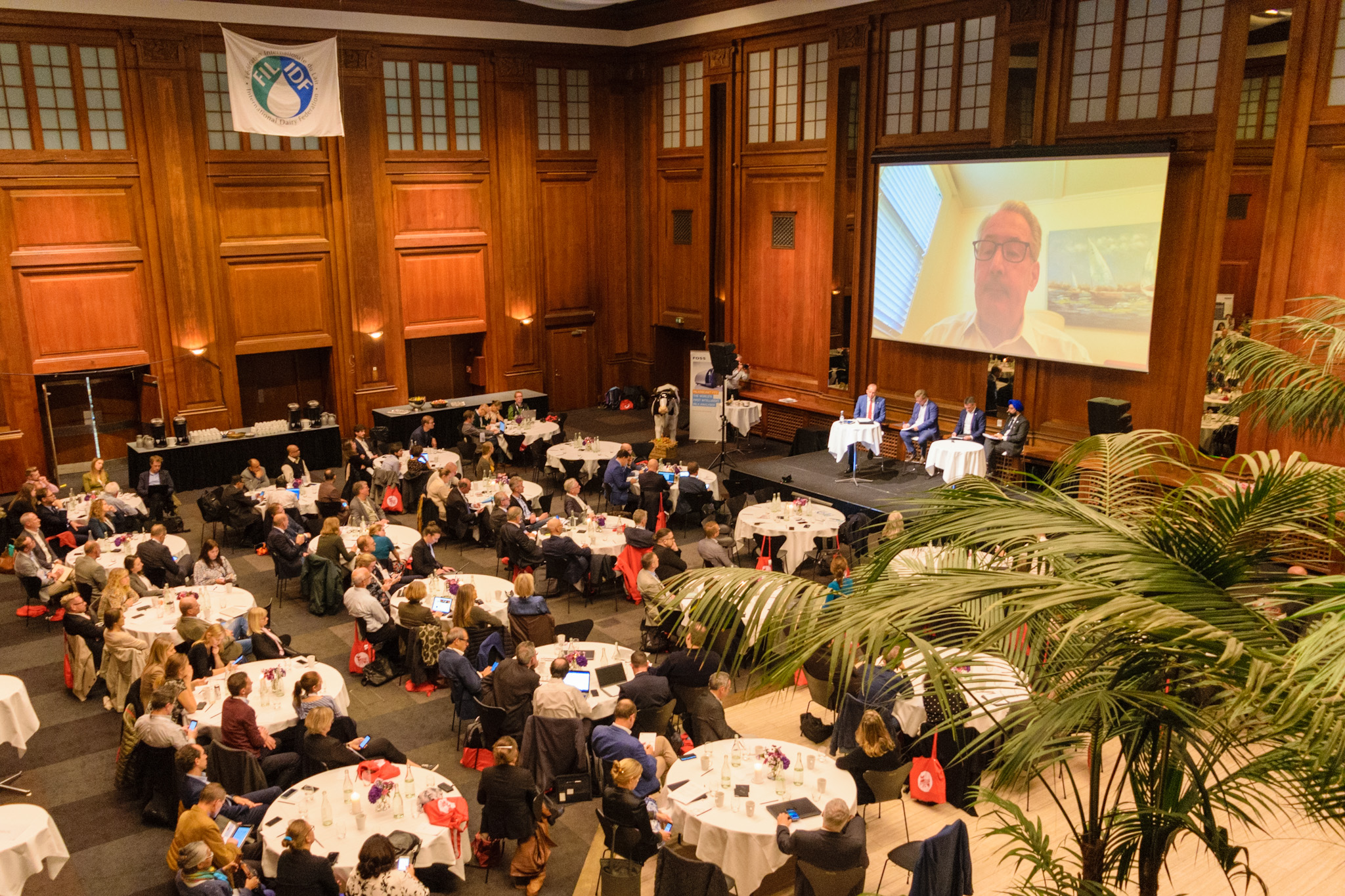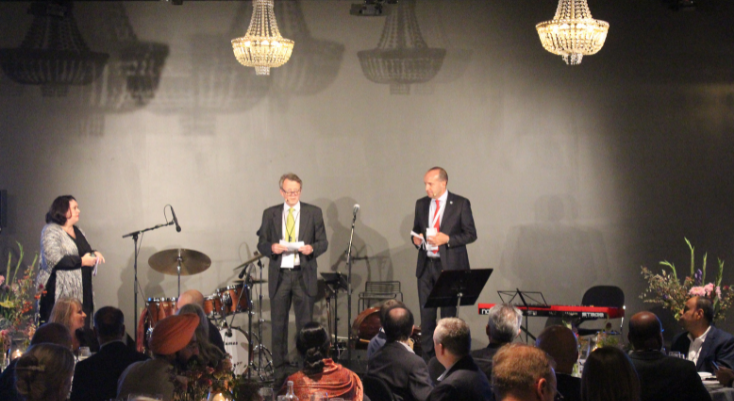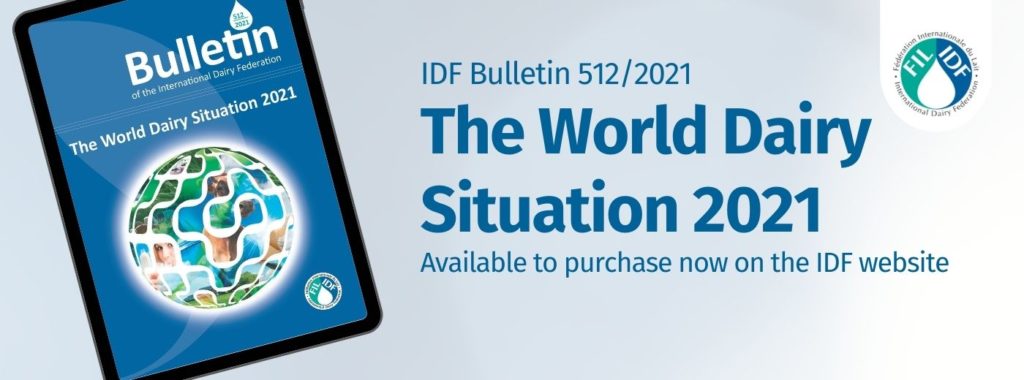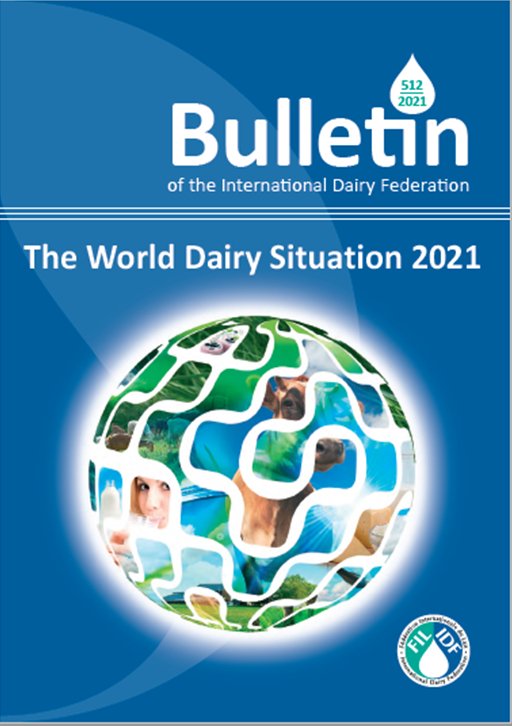“We must reduce the dairy productions climate impact. At the same time, dairy farms must improve their storytelling abilities when it comes to communicating the milk’s good qualifications and all the initiatives that are taken to make the sector sustainable” Peder Tuborgh, CEO, Arla
Jørgen Hald, CEO of, Danish Dairy Board, and Steen Nørgaard Madsen, Chair of, Danish Dairy Board had welcomed around 300 international participants, both virtually and physically in the Axelborg Hall, in Copenhagen, Denmark. The theme of the three-day-long conference for the IDF (International Dairy Federation) members was ‘A Changing Climate for Dairy’.
This thread was picked up by Rasmus Prehn, Danish Minister for Food, Agriculture, and Fisheries in his video greeting where he emphasized that dairy farms have proud traditions for cross-collaboration and for delivering solutions when they are needed. And that time is “bound for change”. This was confirmed by EU Commissioner Stella Kyriakides in her post with a focus on EU’s Farm to Fork strategy. This strategy is to make the European food sector (including the dairy sector) more sustainable.
We must help the dairy producers with the climate action
This warmed the politicians to the ‘Dairy Leaders Panel’ where CEOs from some of the largest global dairy companies – Arla, Lactalis, Mengniu, and Dairy Farmers of America, were to relate to the current challenges. The four international dairy industry CEOs, coming from Europe, China, and the US debated the future of the dairy business.
Peder Tuborgh, CEO, Arla, started with his presentation, by pointing out that the dairy sector must be converted into a climate-neutral and sustainable production. And as the quote in the introduction suggests, it is urgent.
He continued: ‘The key to solving the problem lies with the farmer, where the cows are. As a company we can take a lot of actions in terms of converting to green power and reducing waste at the dairy plants, however, the real challenge lies with the farmer. That is where 85-90 pcs of the climate impact of a litre of milk sits. It is our job as a company to help dairy farmers with these challenges by investing in the necessary research, technique, and development. Many solutions already exist, the trick is to help the farmers with the implementation on their farms’.
He also emphasized that the task of solving the climate challenge also holds a development potential for the sector. ‘If ever there was a time to create the future – it is right now, together with our farmers’ he said. He further concluded: “It is not in the future that action is to be taken – we must find solutions for our climate impact now, as we speak.”
Milk is part of the solution
In his speech, Phillipe Palazzi, CEO of French Lactalis, used the positive values associated with the industry’s products, as his starting point. “Yes, there is a ’Changing Climate for Dairy’, however, we need to show that we are a part of the solution he said, pointing to the health properties and high nutrient density of dairy products. At the same time, he regretted, that the sector is fighting against new nutrition labels, like the French ‘Nutriscore’, that do not reflect the milk’s high level of nutrients. As an example, he mentioned that soda may achieve a more positive score with the label than milk. This alone is based on the fat content of dairy products.
“We have a task in educating consumers and showing them that there is room for dairy products in a well-balanced diet,” he later explained, which he took a more global perspective. Philippe also stressed that “the world’s population is growing, and the dairy sector has a mission in delivering healthy food to a growing population. There is a global potential for dairy products”.
Milk is an important part of Chinas five-year plan
Minfang (Jeffrey) Lu, CEO of Mengniu, who virtually presented his vision, delivered a different approach to the dairy industry than the other panellists. Whilst the European sector has taken 100 years to reach the present level, China has gone through the same development within a short number of years.
“We started from scratch 20 years ago and now have a turnover of 13.6 billion USD in Mengniu. This reflects the enormous Chinese growth, which has increased following the Covid-19 pandemic. In the first 6 months of 2021 the total Chinese production increased by 14 %” said Minfang Lu.
Amongst other things, the progress builds on the fact that the Chinese government has a strong focus on milk. Therefore, in the management’s latest and 14th five-year plan, there is a requirement for a stable supply of milk, as milk is called ‘an important agricultural product’. The political tailwind has been part of making the dairy industry, the fastest growing sector in China. At the same time, China has a strong focus on eradicating poverty as well as ensuring the need for nutrition among a growing middle class, which now amounts to 400 million people.
“This leaves great opportunity – not just for the Chinese but also the global dairy industry” Jeffrey Lu pointed out.
He also claimed himself as an “optimist” in the challenge of obtaining climate neutrality for the dairy sector.
He explained that China is “at the forefront of the development of technological solutions for reducing CO2 and methane emissions and for more efficient use of fertilizer for bioenergy”. He concluded “We work hard to achieve our goals, and I am certain that we will reach them within 5 years, not 10. It seems ambitious, however, think about how far China dairy industry has come in only 20 years”.
USA: Milk plays a part in local communities
CEO and President for Dairy Farmers of America, Rick Smith, who also joined the conference virtually, heads a cooperative dairy company with a very different composition of milk producers – from the small farmer with 25 cows, to giant farms with 35,000 cows. In his speech, he emphasized that dairy plants have an important task in communicating the advantages milk production has for local communities, both in terms of jobs on farms and dairy plants, as well as the production and development of healthy and safe products. He stressed: “At the same time, we must communicate what we do in terms of the environment, animal welfare, and working environment at the dairy plants. Over 1 billion people have livelihoods from the milk and the dairy industry”.
The sector is experienced with rapid conversion
Following the four speeches, it was time for a panel discussion on all the topics previously discussed, which was moderated by IDF’s President, Piercristiano Brazzale and managing director of Amul, Dr R. S. Sodhi. There was agreement amongst the panellists, that the industry must improve its communication towards consumers, politicians, and other stakeholders, on the milk’s good qualities and the many small and large advances that are taking place within the field of sustainability and animal welfare. There was also agreement that the industry faces major challenges. As pointed out by the CEO’s, the handling of the Covid-19 crisis proved that the dairy processing plants are good at adjusting when they are forced to. The sale to food services plunged, whereas the private consumption of dairy products grew significantly. Almost from day to day. As Minfang Lu concluded: “We must be able to match our products to the consumption – meaning that we must always be flexible and adapt the production to match the demand”.
Following this discussion, the panel addressed one of the most visible current consumer trends: the growth in the plant drink sale, with Peter Tuborg pointing out: “We should not consider these products as some that steal from us. There will be room for different product groups, including dairy, and we are also experimenting with different milk alternatives ourselves”.
Rick Smith of Dairy Farmers of America agreed to this and pointed out at the end of the discussion: “We must give consumers what they are asking for, and at the same time communicate the nutritional advantages of milk and dairy products”.
Unofficial translation of a Danish press release issued on 15 October 2021











